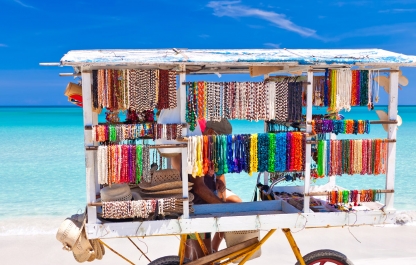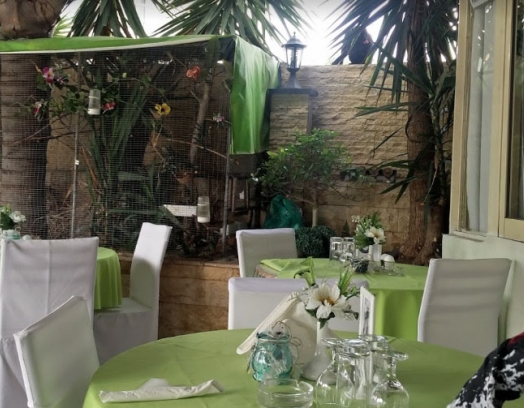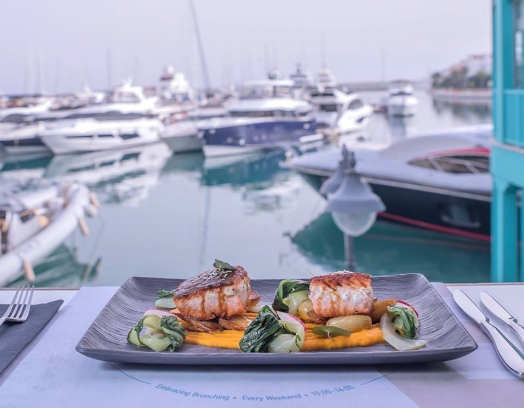With a history spanning over 700,000 years, treating leather — a natural material obtained from animal hides (and sometimes fish scales) — is considered one of the earliest forms of crafts. Other well-known crafts (weaving, spinning and pottery work etc.) became widespread much later, while anthropogenesis (the origin of homo-sapiens), according to official scientific studies, occurred only 100,000 years ago.
The tanning business has long been a developed practice in Cyprus, with the leather-footwear industry occupying a large share of the island’s export market right until the recent past.
Each item is unique in texture and other so-called “varying trademarks”. Despite technological developments and multiple appearances of advocates for green living, natural leather is still in high demand.
Today, therefore, not only will we talk about the development of this craft since ancient times, but we will share some secrets regarding the right choice of leather and learn a little about local brands. Some of you, perhaps, will be enthralled by the idea of mastering this craft, creating your own art objects and decorative elements.
Background History
In the antiquity, people learnt to use leather in the manufacture of simple clothing and footwear. Again, several manufacturing methods have existed since long ago.
The earliest method, for instance, was used in prehistoric times (in the age of Homo erectus) and involved working with stone scraping knives. Later, around 100,000 years ago, leather began to be widely used not only in the manufacture of clothing and footwear but also in the construction of straw huts (this was the time of the Cro-Magnons, whom modern science considers to be our ancestors).
It is well known that in 4 B.C., by stitching animal hide into wineskins and pouring hardening agents into them, the people of Ancient India learnt to fashion morocco [1] (sheep or calf’s skin, dyed with bright colours and characteristic imagery, which was applied with the aid of hot embossing). Such items have always been distinguished for their particular durability and accompanying wax treatment.
Since ancient times, Persia has produced another material, aside from morocco, known as shagreen [2] (shagreen leather — derived from the Arabic “shagree” or “horse spine” — is horse or donkey hide with a finely grained texture, ideal for furniture upholstery and various typical “male accessories”, amongst other things).
The necessity for manufacturing and drying out the hides was contingent upon a hot climate. This resulted in a rather tough “semi-finished product”, which required kneading: with sticks, stones or by hand.
Fatty leather softened far more quickly, therefore, over time, the process of “fattening” became a stage in the production process.
Time passed and the people of Ancient Egypt learnt to craft parchment [3] (along with papyrus, the export of which was banned), a process which was then achieved in Ancient Greece. It involved treating rawhide with chalk or limestone and subsequently drying the material. Parchment acquired its name from the city of Pergamon, where it was rather popular In 2 B.C: the hides of various animals were treated with chalk by means of sophisticated technology, thus strengthening the material, which was then used to create books and manuscripts).

By applying young sheep and goat hide into the alum treatment, an especially thin, gloving leather was obtained, known as kidskin [4] (the milky-white colour of the material was determined by the treatment process). Kidskin was first produced on the Arabian peninsula. Alums were applied in the antiquity, in Ancient Greece, for instance (it was known as “defa”) and in the Roman Empire (“aluta”).
The process of alum tawing made its way to Western Europe in the early centuries of A.D. Leather was also the earliest form of trade amongst Slavic nations, as historical confirmation proves that by 6 A.D., Rus had already begun to apply various methods of leather production, while the tanning trade itself was flourishing to its utmost. That being said, the method of aluming spread very late on in Russia particularly, due to the innovations of Emperor Peter I. Before that, the ancestral Russian method of tanning raw leather materials involved the use of willow bark and oak.
In North Africa, the country of Morocco [5] practises the art of tanning somewhat differently. Leather in tanneries is oxidised with tannins (if the tanning agents are plant-based, oak bark and chestnut are used) to craft furniture and bags. Chrome leather (mineral tanning) is used to manufacture clothing. To begin with, the hides are salted for 30 days and further soaked in clean water. The raw material is then transferred to a limestone solution (pigeon droppings are used), which softens the leather and enables it to be grained. The prepared leather is then spread out on the rooftops of homes where it can dry out. To this day, all the processes here (in the town of Fez) are still practised by hand.
For instance, other northern nations (Ugrians: Manshi, Khanty and the Magyars of Hungary) fashioned leather from bird skin, while not depluming the material. Leather clothing and footwear were decorated with embroidery, imagery and ornamental stones, whilst Native Americans used coloured strips from fish scales to cover the seams on their clothing.
If we head further to the Far North, we’ll encounter the Eskimos and Chukchi (like the Native Americans) who use leather to manufacture housing — teepees and yarangas. The Natives of North America, meanwhile, would stretch their hides, inserting wooden nails into the corners and rubbing them with a mixture of buffalo urine and clay, while storing them in humid conditions for a long period. The hide was then treated with animal brains and fat; skived, mollified and then smoked over a rug (the formaldehyde contained in the smoke contributed to preserving the skins).
Until the beginning of the First World War, Russia exported the famed, multicoloured morocco from Torzhok, which along with tobacco pouches and footwear, was used to produce belts embroidered with gold, silver and silk. Thanks to its quality, Russian morocco and several other types of leathers from the past (until the first third of the 20th century) outshone their European counterparts.
Many of the techniques described were even well-known in Cyprus…

Contemporary Leather Manufacture in Cyprus
Elderly Cypriots and local tanning professionals, whom I managed to interview regarding this issue, rant at how the manufacture of accessories and other items from leather, although it still goes on today, is not on as such a wide scale as it used to be in the recent past.
According to statistics, from 20018 to 2014, the number of island enterprises engaged in leather manufacture, as well as industries linked to its production, significantly dropped (from 60 to 27).
In Cyprus, many remember well that it’s always been possible to purchase high-quality footwear and bags of any make or brand (both local and any “hyped up” overseas variety) at a low price.
Nowadays, in some of the island’s boutiques, you can find trendy accessories available with the “Made in Cyprus” label (bags, wallets and purses, belts and CD cases), as well as footwear with rich colour ranges and different styles. You can get them for relatively cheap, especially in the sales season.
In fact, some tourists have shared such information on the vast expanses of the internet: Cyprus still manufactures the longest belts in the world (more than 150 cm), which can be shortened at the customer’s request.
Motifs and styles such as antique, retro-classic, boho-hobo and grunge, are very popular amongst local designers.
Many accessories and footwear can easily be combined with practically any style of clothing.
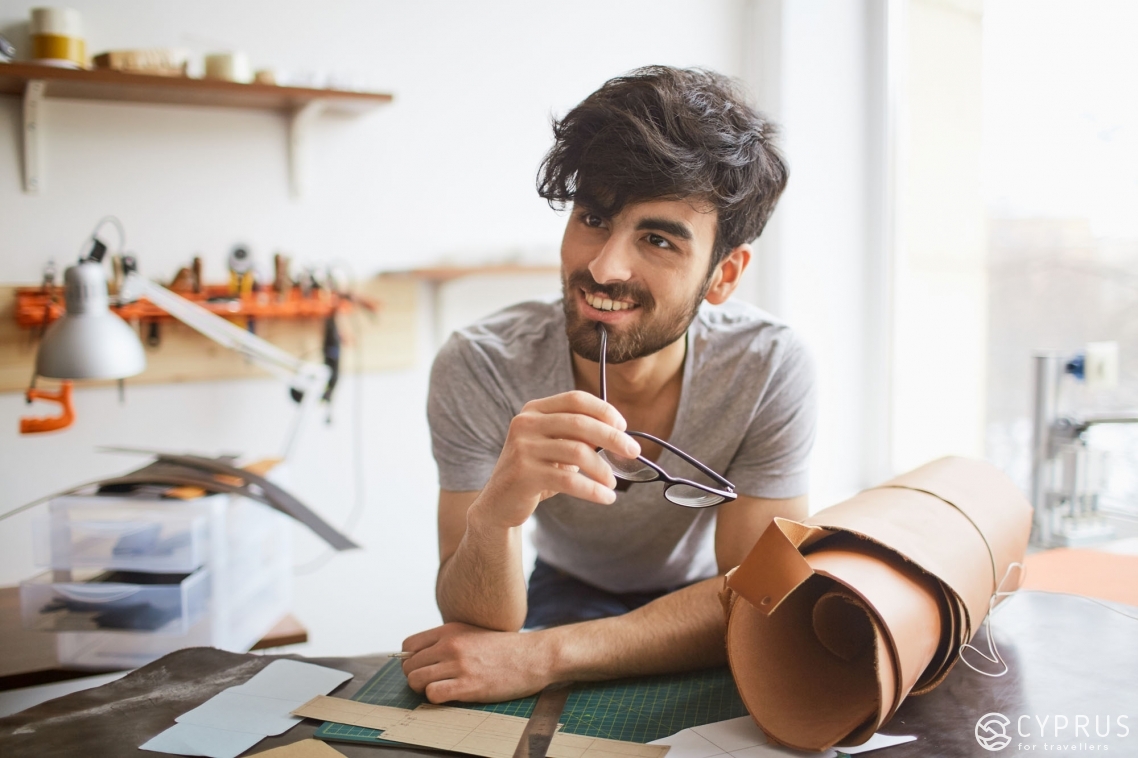
We’ve highlighted the following amongst the most luxury and high-quality local brands:
Astir Shoe Factory Ltd (also Sparta Novelty) — a family business, founded in 1960, which produces hand-sewn unisex sandals and rucksacks made of high-quality leather. The current owners of the fashion brand believe that the correct choice of clothing and footwear imbues each of us with power and confidence.
Factory Address: Markou Brotsari Street 35 (Nicosia)
Boutique Address: Ippokratous Street 8 (Old town, Nicosia, Opposite the Leventis Municipal Gallery)
Contacts: + 357 22438238, hello@spartanovelty.com
Kelpis Shoes — classical elegance, practicality, individual tailoring and recognised design.
The brand traces its roots back to 1972, founded in London by the Cypriot Myrianfis Kelpis, who had been hand-sewing shoes since 1954. In addition to his services being used by members of the Saudi Arabian royal family, Kelpis accepted orders from famous individuals such as Rod Stewart, Elizabeth Taylor and Richard Barton — not to mention Princess Diana… M. Kelpis returned to Cyprus in 1988 and opened his own boutique in Paphos, at the following address: Ioanna Agroti Street 11 (Old Paphos). His son, the young designer Giorgos, later took on his father’s dynasty.
Contacts: +357 26 945 477, +357 99 548 680; giorgoskelpis@yahoo.com
KORALI Handmade — a brand which strives to create female footwear and accessories fashioned from the highest quality of leather (from Greece and Italy) and the designs of Marilli Makri, at accessible prices. The company’s long-term plan involves a rebirth of the leather footwear industry on the island, with a return to its former level of renown.
Naturally, the entire range is manufactured by hand in an old factory (P.M.S. Shoe Factory Ltd, circa. 1960). The brand is characterised by the simplicity and universality of its collections. Together with this, all of the clients’ individual requirements and desires are taken into account with each item made to order.
Contacts: +357 22759202, +357 99744389; info@korali-handmade.com

What else you can bring back from Cyprus as a souvenir look here.
If the need arises to choose: which leather should you give preference to, how do you decide on the desired external look and how often will you use the crafted item?
So, here are several pieces of advice on how not to get it wrong.
What types of leather are there and which should you choose: natural or faux leather?
The process of transforming hide into leather involves three main stages. After cleaning, the skin turns into a semi-finished, unhardened product. Upon tanning, the structure of this so-called “rawhide” is then strengthened. Decorative works add the necessary properties and desired external look to the now hardened work in progress. When a more uniform surface is required, the leather can be polished. However, the natural product won’t be identical (uniform) even in thickness: many factors affect the condition of an animal’s hide (age, climate conditions, diet and whether the hide has been well maintained; the season in which the animal was scored and the tanning technique also play a role).
Depending on the treatment type, the following types of grain leather exist:
- Aniline (with the lowest quantity of defects, it is considered the most natural, as very little technology is used when treating it, meaning it costs more than other types.
- Semi-aniline (initially with more defects, meaning more dyeing; the end product is also premium leather and in comparison to aniline leather is also highly practical.
- Pigmented (this demands more polishing and other aspects; despite the achieved smooth external appearance, this type is inelastic and rather tough. It is suitable for the production of furniture and car seats.
In fact, the modern method of leather tanning has also undergone changes. Now it is performed through a combination of methods — with mineral, plant-based and synthetic tanning agents. For instance, on a cut of chrome-tanned leather, there is always a greenish-light blue hue; while on plant-based leather — shades range from yellow to brown.
Leather items, as is well known, are constantly in fashion: be they made of natural or artificial leather, their techniques and popularity still reach great heights in our day. It’s not always easy to distinguish them.
Artificial leather (or imitation leather) — this is a material created from polymeric multi-component compounds on a fabric base in order to imitate natural leather and its base properties. Today, various wardrobe items and fancy goods are widely manufactured from faux leather, as well as technical goods. Nowadays, this material is completely eco-friendly, with no allergens or smell. It is also very “breathable”, possessing the property of not overheating in hot environments and not “hardening” in the cold.
In contrast to natural leather, artificial leather is simpler to work with.
It’s easily cleaned and doesn’t fade in the open sun. Faux leather, in particular, is a popular decorative material in modern interiors… In fact, this substitute is far cheaper than its natural counterpart.
It’s worth taking into consideration that many people today refuse to use things made of natural leather, for moral and ethical reasons.

Nevertheless, a particularly important advantage of natural leather is its elasticity and long life-span. Now let’s figure out how to distinguish one from the other, as it’s not always possible and not all shop staff are capable of doing so (simply put, they sometimes lead customers astray).
- Pay attention to labels — manufacturers who care about their reputation place a piece of the material into the box with the finished product — a marker of sorts, from which you can learn its composition. It wouldn’t be overkill to make sure the inscription “genuine leather” is present.
- Examine the structure of the leather’s surface, its pores and other characteristics: natural material doesn’t have a symmetrical pattern, the pores are different in shape and depth and are positioned chaotically. Pay attention to the thickness of the material’s edge. Natural leather, as a rule, is thicker than substitutes and doesn’t have such smooth and level edges like faux leather.
- Go with your gut after touching the product. Natural leather, depending on the type and quality, can be both rough and smooth to the touch, whilst moderately pliant and soft. If it’s too smooth (like plastic), then you’re probably dealing with a fake… sorry, with an imitation. Artificial leather also tends to stretch more than the natural stuff. It’s important that leather immediately becomes warm once you’ve touched it, while also remaining dry. Imitation leather warms up only several minutes later, becoming slightly moist.
- The smell: Just try smelling the aroma of natural leather.
So, admirers of classical and luxury styles still prefer natural leather. Imitation leather, in that case, may be a practical and economical replacement, but it won’t be identical. Over time, natural leather softens and gains more appeal, meaning items made from it boast a higher level of comfort: its soft but strong texture provides it with more endurance. The only serious setback is that all leather is porous and absorbs moisture rather easily, therefore it’s worth protecting in order to avoid it drying out and forming spots in the long run.
How to work with Leather
It’s possible that this material will not only push you into indulging in shopping and examining boutique assortments to find faults — it will also move you to create leather items with your own hands.
First and foremost, to manufacture anything, you need the right instruments: a sharp utility knife and various scissors (tailors’ scissors, manicure scissors and others); a hammer, awl and boot hook; an angle and ruler, templates and French curves; markers, thread made of linen, thick cotton or nylon, as well as sinew, most often artificial (for its natural counterpart is rather rare and supplied in short lengths). The thread or sinew is usually rubbed with beeswax before use.
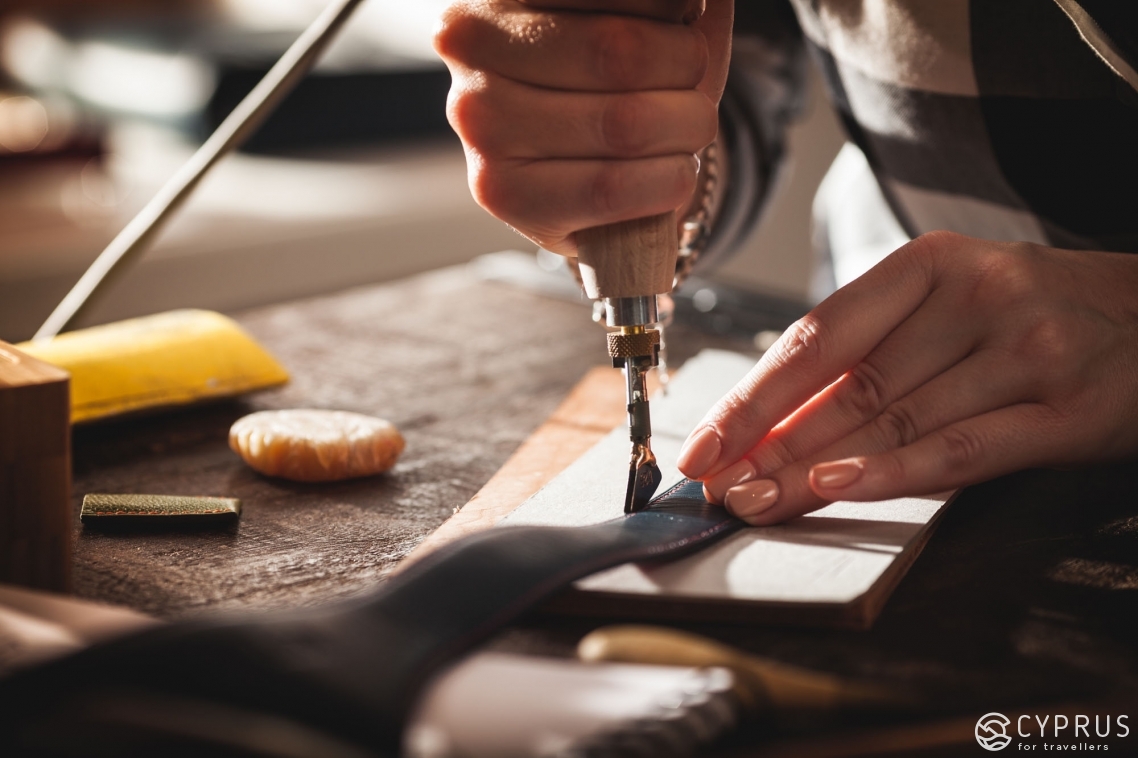
For novices, it’s worth trying to make the following items from hand: belts, simple bags — “sacks”, boxes, make-up bags, change wallets etc.
When working with large items (tailoring, panels, furniture elements) you won’t be able to manage without a sewing machine: it will need to have a rolling foot and faceted needle.
Materials can be ordered online or purchased in hobby and craft shops. Note: As a rule, craft shops and places which deal with leather creation don’t offer materials in large sizes, usually presenting wares in the form of cuttings and waste material from factory production.
Buy yourself a graphic guide, watch some video clips and visit a few website forums.
So, where to start?
First, we determine the choice of material: thin leathers for costume jewellery and small items; thick leather with a rougher texture for bags and belts.
We then create a pattern (template): along the back side, we go round the contour with a marker. Remember: natural leather stretches more widthways, so cut pieces lengthways. Don’t use pins (it will leave a trace; use rubber glue for marking.
You can only sew with strong elastic threads, synthetic fibres aren’t suitable.
The item ought to be ironed on the back side, with no steam.
The simplest method of this work is forming (or fitting).
You can give form to the leather having preliminarily wet and shaped it (as a rule, from wood) and then you can allow it to try.
Another option for shaping involves pouring a small filler (gravel) into the leather.
Aside from the traditional method with subsequent drying, a mass of methods is used today: for instance, “baking” leather which has been shaped to be tougher; in other cases, melted wax is applied, either on its own or with a mixture of other components.
Tailoring Clothes and The Rest: For Those Determined Sorts
Natural leather for clothing should be soft, without any spots, wrinkles or creases. Its dye should also be of equal colour, resistant to friction and ironing at a temperature of 80 °С.
Sewing leather, in some respects, resembles fabric work, although leather is a lighter and more elastic material.
Advice from former experts: master craftsmen recommend beginning to sew with leather only after first acquiring the skill to work with fabric.
The Concluding Steps: Decorating
1. Dyeing and imagery
Leather emerges from a tannery either in its “natural” hue or dyed. Moreover, we learnt that leather can be given a cover dye (with colour applied to the surface: this hides and smooths out any defects, gives a shine to the leather and protects it from moisture) or deep dye (the entire thickness of the material is dyed).
In their arsenal, a master tanner can have additional dyes for applying to large, individual items and for creating new, original designs.
Ideas for imagery: using plant leaves as stamps (ferns, vine leaves); designs with the so-called “Hot Batik” technique: using melted stearin and a brush with the subsequent application of aniline dye (for fabrics).
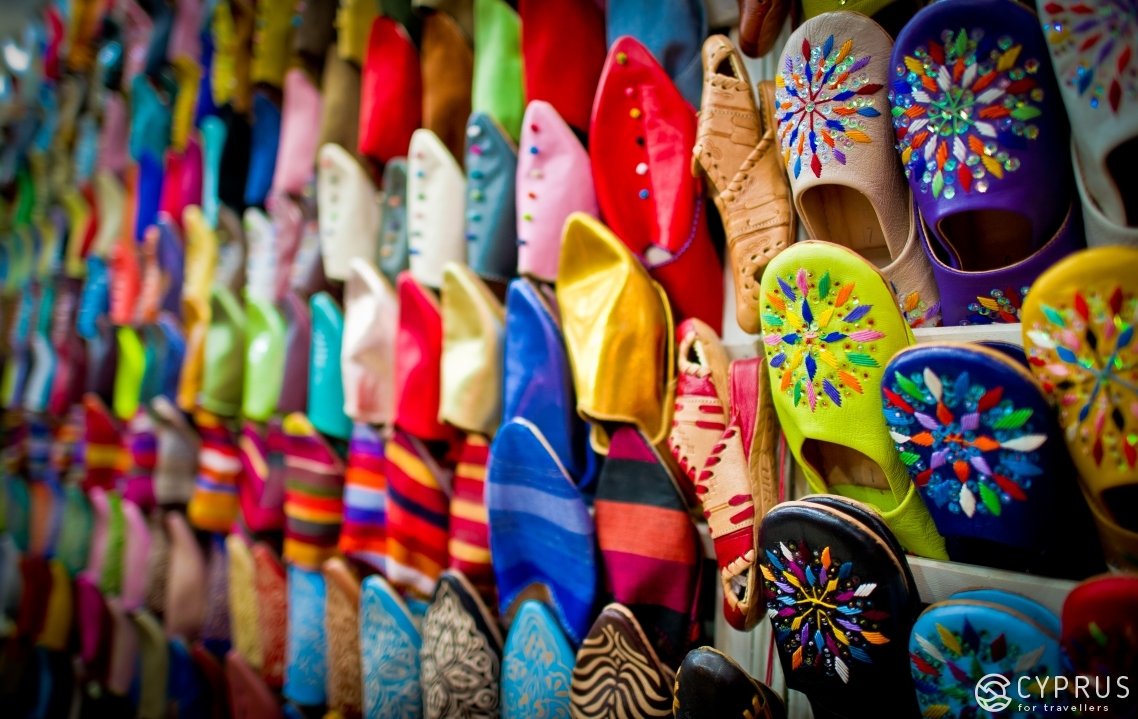
2. Appliqués (superimposed or cut out)
Creating appliqués is one design option: with the use of ready-made colour pieces to achieve a great effect.
Appliqué methods vary depending on the type of item. Regarding clothes, thin leather is sewn to the base; for panels, bottles and others, fragments of a pattern are glued or sewn “back to back”, sometimes “with an overlap”.
3. Pyrography (or Burning)
This technique is applied to leather items with a thick texture, using a hot iron (stamp) or pyrograph: the colour and thickness of the lines depend on the extent to which the needle is heated. The main thing here is not to overdo it, otherwise, it will easily burn through the leather.
This technique is often combined with imagery, engraving and imprinting for decorating accessories and interiors, as well as creating costume jewellery etc.
4. Imprinting
Several types exist. A punching technique is used in decorative-applied arts, sometimes in combination with a relief (a filler is placed under the pattern and then pressed along the contour). Thermo-stamping is also well-known, which involves creating an imprinted pattern with heated metal stamps.
5. Perforation
This openwork technique traces its roots far back into the past; various sized holes are inserted in the leather, creating ornaments similar to arabesques or stained glass.
6. Wеaving (or braiding)
This is a widely renowned and rather simple technique, which along with macrame elements, is used to create decorations and belts, as well as in the finishing of bags, clothing and footwear.
7. Draping (“Blind Man’s Buff”)
This adds an interesting effect and volume to the image and decoration, whilst allowing defects to be masked: a piece of leather is gathered in the crease and attached to the base with glue.
8. Engraving
A technique applied in jobs with thick leather: an image is chopped onto the face of some leather, which is soaked beforehand in water. The cuts are then widened and filled with acrylic for relief.
9. Intarsia
This is the same as incrustation (an ancient technique, mentioned by Pythagoras, which was very popular in medieval Europe). It is carried out on a textile (thin and plastic types of leather) or wooden base (working with heavy and thick leathers). Templated cutouts are glued “back to back” to create panels, souvenirs or to decorate furniture.
As you can see, leather is a magnificent material, suitable for any bold design and offers every artist (and anyone who considers it as such) a wide field of activity to work in.
Stay with us and until next time!
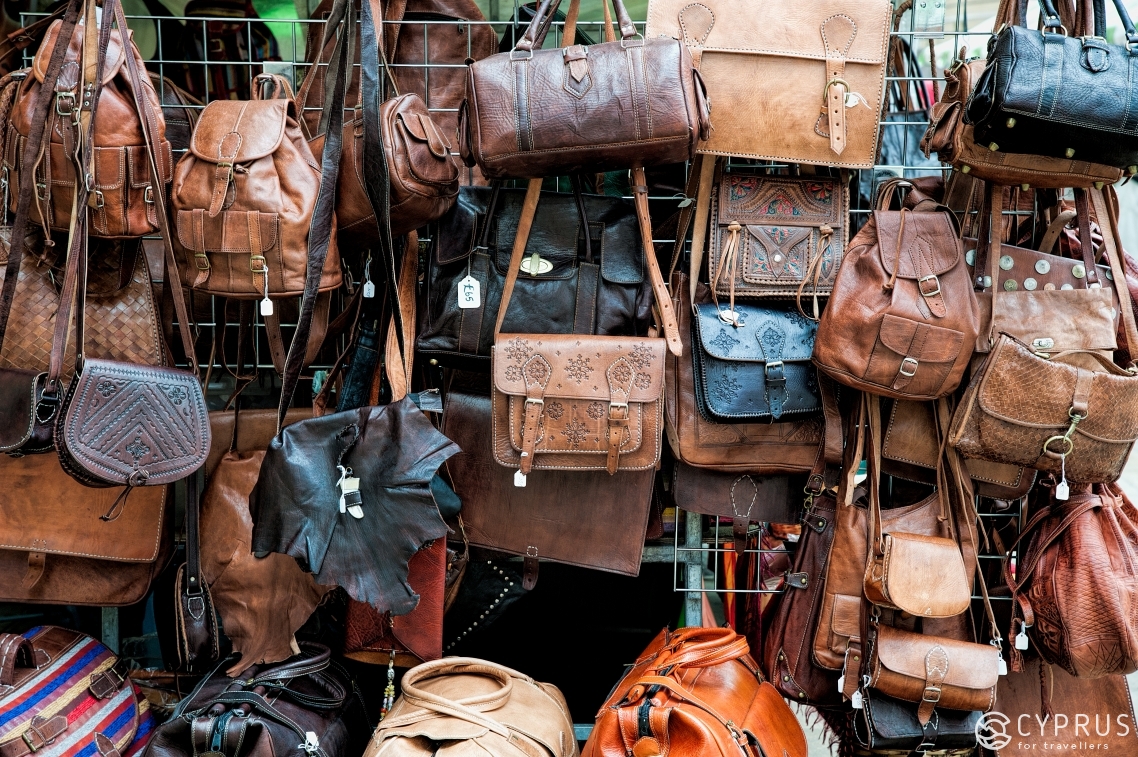
[1] Advice on how and where to find branded morocco items in Cyprus: either in stand-alone boutiques or shopping centres; it can also be ordered on the official sites of commercial brands (Gucci, Prada, Louis Vitton etc).
How to distinguish an original: firstly, discounts on original collections won’t exceed 50% (they rarely go higher than 30%). Secondly, definitely pay attention to the detail: the clarity of the logo and the pattern symmetry in relation to the handles (LV); some (Gucci) never attach labels (in this case a “G” onto the lining of a bag — a clear sign of a fake; originals can be distinguished by the logo on the zip, under the inner-side pocket). Brand accessories are rather heavy; others are sold only in special cases and brand bags (Prada), while the brand’s logo can be found on all parts of metal accessories.
[2] In Europe and Russia, shagreen (considered to have originated in North Africa) is traditionally a decorative material. Aside from the aforementioned points, it is also used in the creation of cases for musical instruments, as well as for book and album covers.
In fact, the “shagreen” effect is very popular in other decorative materials and in designing interiors: for instance, when painting a wall a “shagreen effect” is subsequently achieved after drying a thin layer treated with a solvent.
[3] Before the advent of typography and the respective widespread use of paper, expensive parchment (incidentally, historians and palaeographers use the term “parchment” from the Latin Pergamen; so that the confusion with paper parchment, which is of plant-based origin, is excluded) was repeatedly used: it could be refolded, previous texts could be removed and new ones added... right until the late 17th century, when the Church forbade that sacred scriptures be erased. In our time, parchment, manufactured via a special method, is used in Judaism to create mezuzah — sacral manuscripts written in biblical Hebrew.
[4] Kidskin possesses characteristically high elasticity and has lower resistance to the impacts of water.
Kidskin is characteristic of items very smooth to the touch, which don’t crease when worn. Kidskin gloves still remain an elegant element in evening fashion to this day. In addition, this leather is used to make costume jewellery (bracelets, necklaces, brooches and earrings) and also has applications in design work (panels, drapes and other elements).
[5] To this day, many local items produced from leather are a shock to the imagination. One of the most striking examples concerns some old chess pieces and a chessboard (Morocco, 15-16th century).



